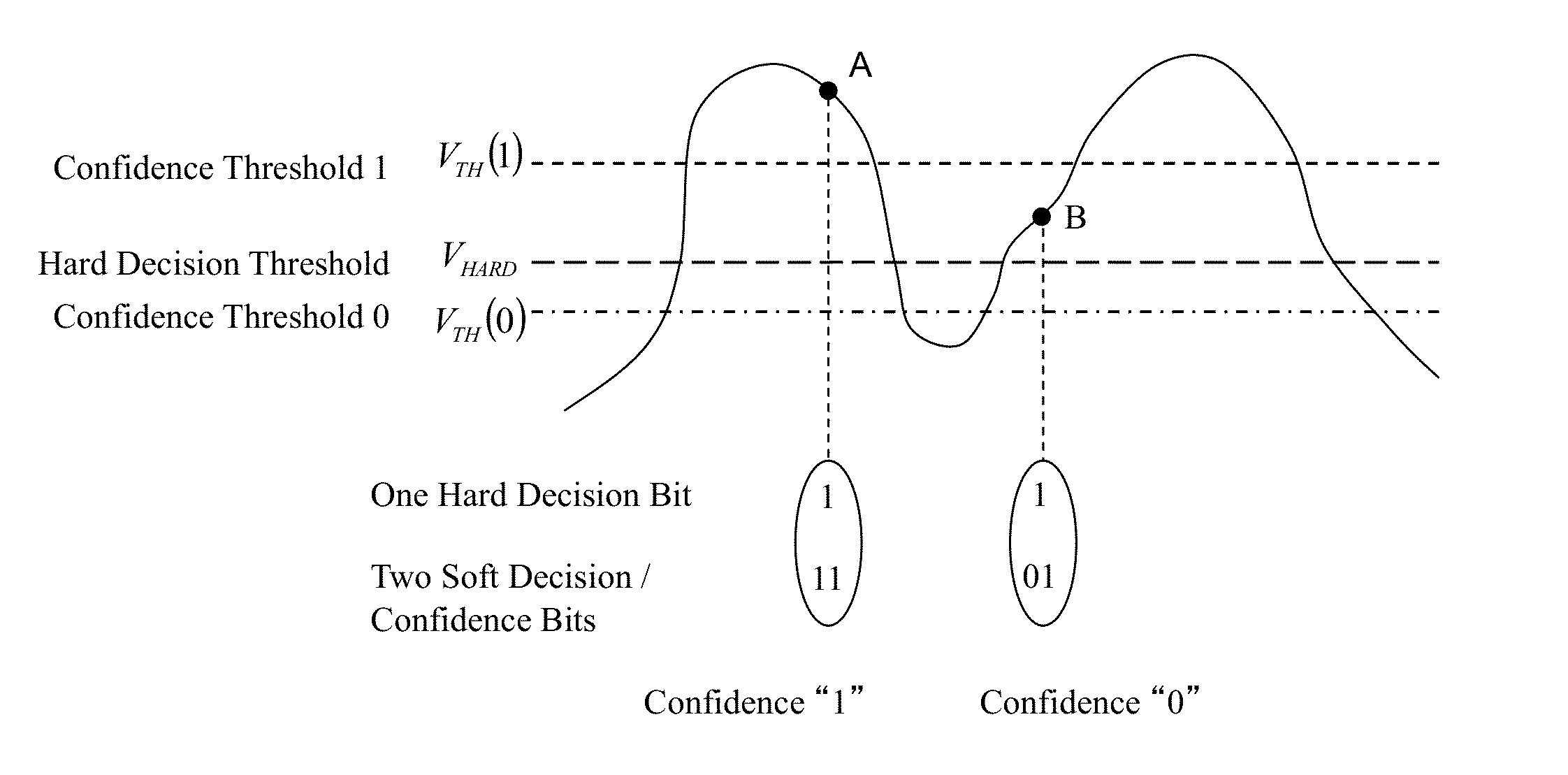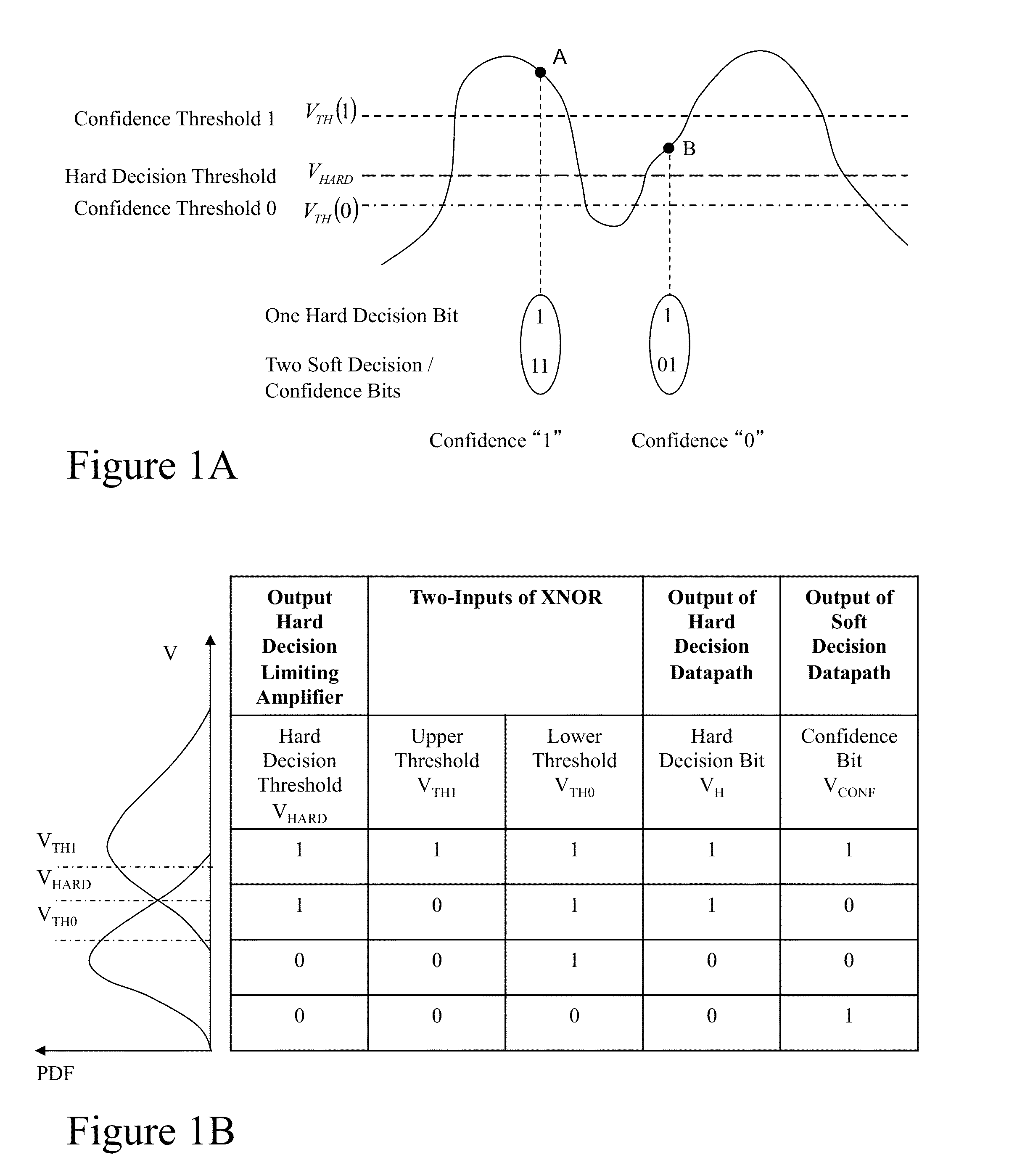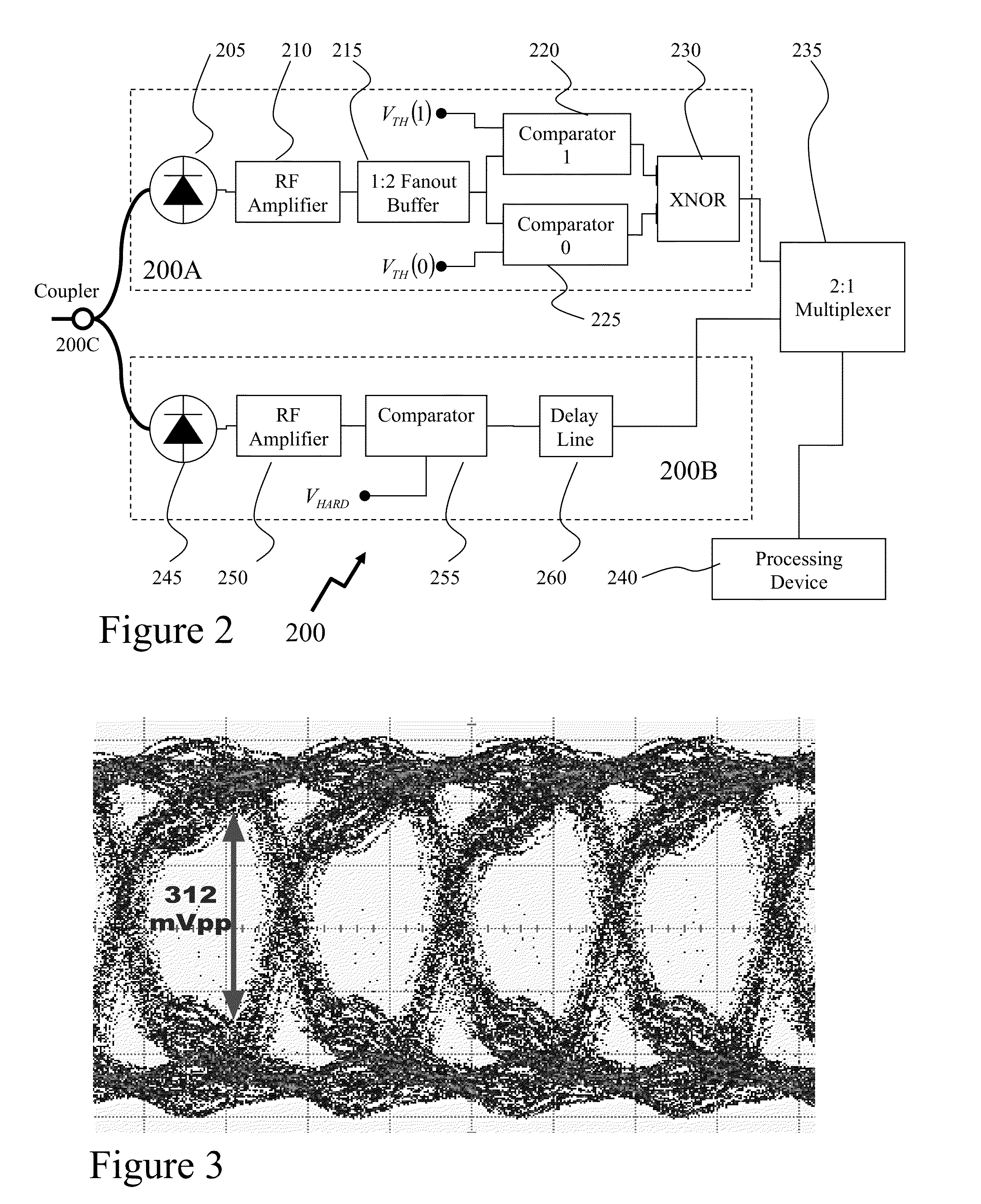Methods and Systems for Optical Receivers
a receiver and optical technology, applied in the field of optical receivers, can solve the problems of difficult implementation of high data rate optical communication, limited coding gain of hard-decision-based receivers, and difficulty in implementing optical communication in high data rate. achieve the effect of low complexity
- Summary
- Abstract
- Description
- Claims
- Application Information
AI Technical Summary
Benefits of technology
Problems solved by technology
Method used
Image
Examples
Embodiment Construction
[0052]The present invention is directed to optical receivers and more specifically low complexity optical receivers for decoding encoded data.
[0053]The ensuing description provides exemplary embodiment(s) only, and is not intended to limit the scope, applicability or configuration of the disclosure. Rather, the ensuing description of the exemplary embodiment(s) will provide those skilled in the art with an enabling description for implementing an exemplary embodiment. It being understood that various changes may be made in the function and arrangement of elements without departing from the spirit and scope as set forth in the appended claims.
[0054]Conventional direct-detection receivers provide one bit of information for each received optical “bit” corresponding to a hard-decision at the optimum decision threshold of the receiver. The receiver consists of a photodiode followed by a transimpedance amplifier (TIA) and a limiting amplifier. The limiting amplifier digitizes the analog s...
PUM
 Login to View More
Login to View More Abstract
Description
Claims
Application Information
 Login to View More
Login to View More - R&D
- Intellectual Property
- Life Sciences
- Materials
- Tech Scout
- Unparalleled Data Quality
- Higher Quality Content
- 60% Fewer Hallucinations
Browse by: Latest US Patents, China's latest patents, Technical Efficacy Thesaurus, Application Domain, Technology Topic, Popular Technical Reports.
© 2025 PatSnap. All rights reserved.Legal|Privacy policy|Modern Slavery Act Transparency Statement|Sitemap|About US| Contact US: help@patsnap.com



